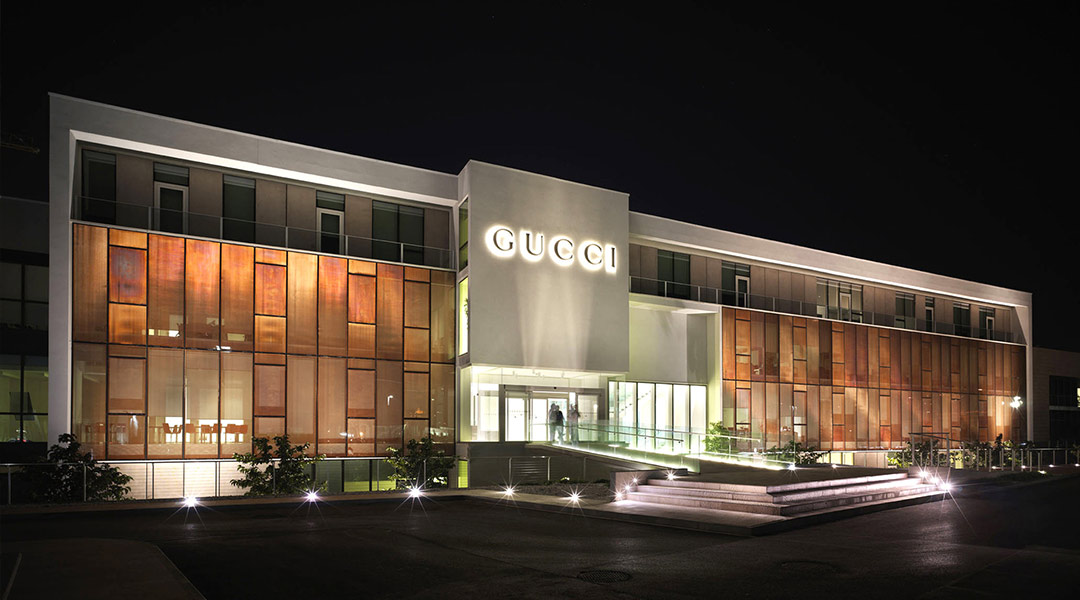
The Reinvention And Rebuilding Of The House Of Gucci
The transformation of Gucci Hub in Milan from a 1920’s aircraft factory into an ultramodern complex including workspaces, runways, restaurants, and collective areas is as fascinating as the Gucci story itself. The Gucci brand was founded on the values of quality and elegance – a language that spans fields and eras of design, and is beautifully expressed in a fashionable, functional building that incorporates the architectural landmarks of the original Caproni aircraft manufacturing facilities.

Photograph by: Pietro Savorelli
Glass walls allow natural light to fill the spacious interiors.
In the 1920s, Guccio Gucci and his family were building a reputation for luxury leather goods. A small shop in Florence grew into a workshop of 60 artisans. Eventually, the brand’s quality and style would catch the world’s attention.
Meanwhile, Italian aeronautical engineer Giovanni Caproni was designing and building the first aircraft made in Italy. His interest in innovative technology led him to create hundreds of aircraft models, including many unconventional designs. Although not all of his endeavors were successful, he was undoubtedly a pioneer of the Italian aircraft whose designs would influence the future of aviation.
Excellence, daring choices, and Italian elegance defined the creations of both brands. In the modern day, the Gucci Hub has taken over the former Caproni aircraft factory, which closed in the 1950s. The vast complex of buildings was created for a multitude of functions, including facilities for workers, a warehouse, and a huge hangar for testing. Today, the buildings fulfill the needs and requirements of a fashion company. The complex includes runways for fashion shows, restaurant spaces, offices, and collective areas.

Photograph by: Pietro Savorelli
The spacious lobby provides vantage points for common areas.

Photograph by: Pietro Savorelli
Exterior Facade
The New Gucci Headquarters Building, by Genius Loci Architettura, is especially illustrative of the brand’s opulence, and its purpose: to be seen and admired. The stylistic features of the original buildings have been adapted and refurbished to preserve the historical tradition of Italian quality.
The building, by its architecture, declares its creative powers. The high-visibility façade, constructed from layers of copper mesh and glass, interacts with sources of light to produce a lustrous effect. The building materials, along with renewable energy and waste recycling systems, make the Gucci Hub a fully sustainable project.

Photograph by: Pietro Savorelli
Tree-lined walkways and gardens enhance the building’s verdant atmosphere
Gucci’s changing conception of itself determines how they will continue to adapt and convert the spaces available to them.


